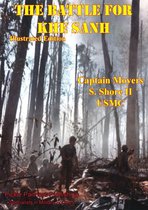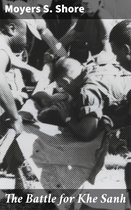Close Air Support And The Battle For Khe Sanh [Illustrated Edition] Ebook Tooltip Ebooks kunnen worden gelezen op uw computer en op daarvoor geschikte e-readers.
Afbeeldingen
Artikel vergelijken
- Engels
- E-book
- 9781782894438
- 15 augustus 2014
- Adobe ePub
Samenvatting
Includes 7 maps, 3 tables, and more than 80 photo illustrations.
In the 77 days from 20 Jan. to 18 March of 1968, two divisions of the North Vietnamese Army (NVA) surrounded a regiment of U.S. Marines on a mountain plateau in the northwest corner of South Vietnam known as Khe Sanh. The episode was no accident; it was in fact a carefully orchestrated meeting in which both sides got what they wanted. The North Vietnamese succeeded in surrounding the Marines in a situation in many ways similar to Dien Bien Phu, and may have been seeking similar tactical, operational, and strategic results. General William C. Westmoreland, the commander of the joint U.S. Military Assistance Command Vietnam (COMUSMACV), meanwhile, sought to lure the NVA into the unpopulated terrain around the 26th Marines in order to wage a battle of annihilation with air power. In this respect Khe Sanh has been lauded as a great victory of air power, a military instrument of dubious suitability to much of the Vietnam conflict. The facts support the assessment that air power was the decisive element at Khe Sanh, delivering more than 96 percent of the ordnance used against the NVA.
Most histories of the battle, however, do not delve much deeper than this. Comprehensive histories like John Prados and Ray Stubbe’s Valley of Decision, Robert Pisor’s End of the Line, and Eric Hammel’s Siege in the Clouds provide excellent accounts of the battle, supported by detailed analyses of its strategic and operational background but tend to focus on the ground battle and treat the application of air power in general terms. They do not, however, make significant distinction between the contributions of the two primary air combat elements in this air-land battle: the 7th Air Force and the 1st Marine Air Wing. An analysis of their respective contributions to the campaign reveals that they each made very different contributions that reflected very different approaches to the application of air power.
Kies gewenste uitvoering
Onbeperkt lezen met Kobo Plus
Start direct met lezen op je Kobo e-reader of de bol.com Kobo app
- Kies uit tienduizenden Nederlands- en Engelstalige e-books
- De eerste 30 dagen zijn gratis, daarna € 9,99 per maand
- Opzeggen kan altijd
Rapporteer dit artikel
Je wilt melding doen van illegale inhoud over dit artikel:
- Ik wil melding doen als klant
- Ik wil melding doen als autoriteit of trusted flagger
- Ik wil melding doen als partner
- Ik wil melding doen als merkhouder
Geen klant, autoriteit, trusted flagger, merkhouder of partner? Gebruik dan onderstaande link om melding te doen.








